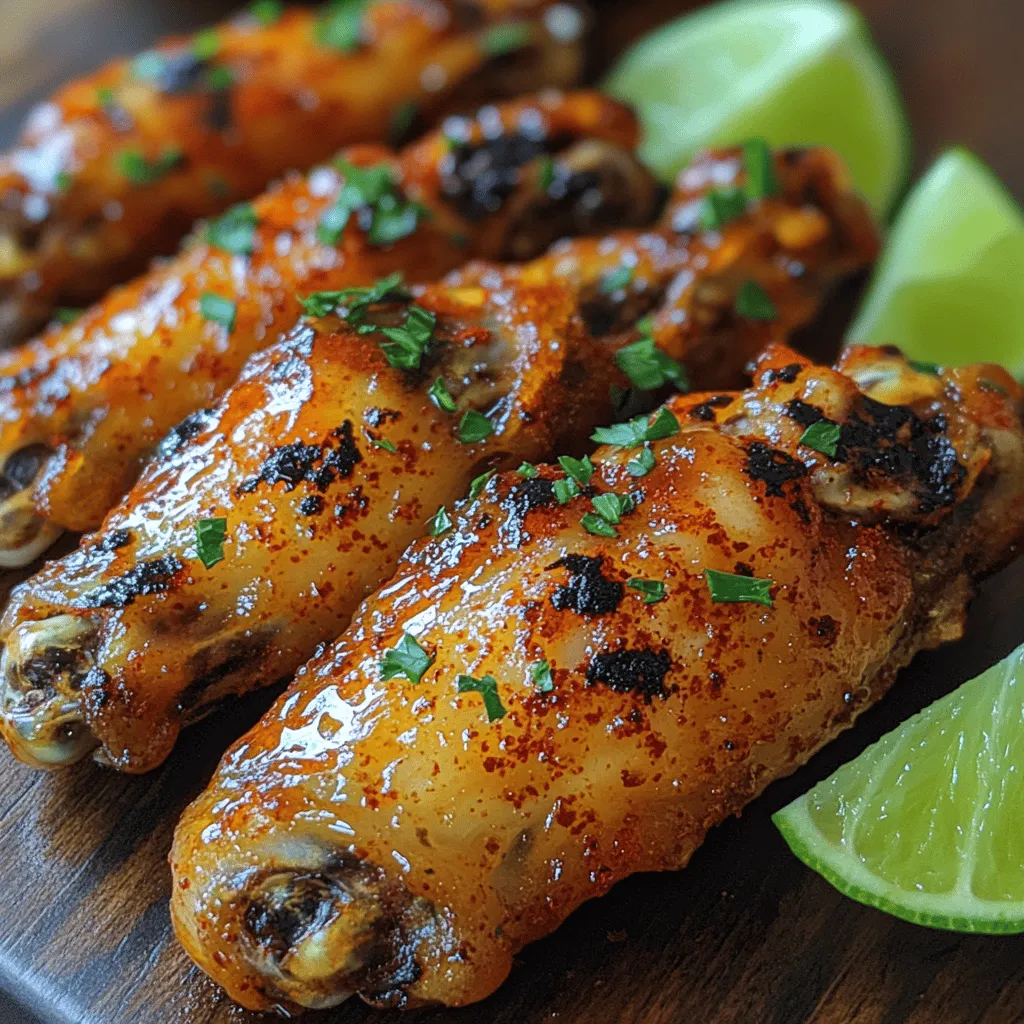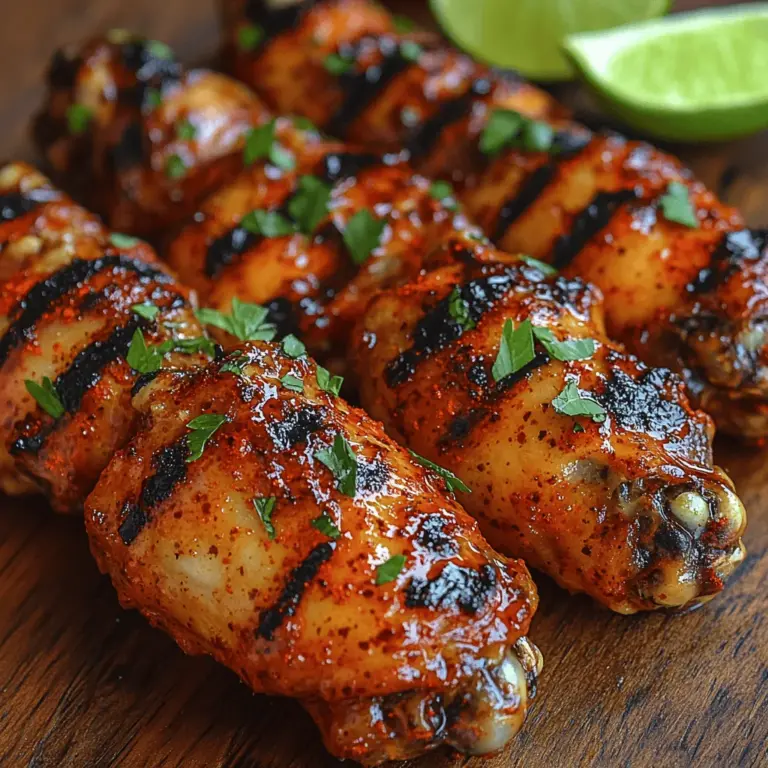Introduction
Roasted chicken is a quintessential dish that graces tables across cultures, embodying comfort, warmth, and culinary tradition. At its core, herb-roasted chicken is more than just a meal; it is a versatile canvas that invites creativity through the use of fresh herbs and spices. This dish stands out not only for its delectable taste but also for its ability to bring people together, making it a favorite for family gatherings, festive celebrations, or simply a cozy weeknight dinner.
The importance of herbs and seasoning in elevating the flavor of roasted chicken cannot be overstated. Fresh herbs like rosemary, thyme, and parsley infuse the meat with aromatic notes that transform the ordinary into the extraordinary. When combined with the right balance of spices, these herbs create a symphony of flavors that tantalize the palate and resonate with the rich history of culinary practices from around the world.
Roasting chicken is an age-old technique that transcends geographical boundaries, with variations found in Italian, French, and Middle Eastern cuisines, among others. This adaptability allows home cooks to experiment with diverse flavor profiles, making roasted chicken a beloved dish in any household. Whether you prefer a classic herb blend or wish to explore bold, unexpected flavors, this guide will walk you through the process of achieving the perfect herb-roasted chicken, ensuring that each bite is a celebration of taste.
Understanding the Basics of Roasting Chicken
Roasting is a cooking method that involves cooking food evenly in an oven by surrounding it with dry heat. This technique not only enhances flavor but also promotes a beautiful, golden-brown crust that contrasts delightfully with the juicy meat inside. When it comes to chicken, roasting is particularly advantageous as it allows the skin to crisp up, keeping the meat moist and tender. This method also requires minimal intervention, freeing you up to prepare side dishes or simply relax while the chicken cooks to perfection.
One of the primary benefits of roasting chicken over other cooking methods, such as boiling or frying, is the enhanced depth of flavor achieved through the caramelization of natural sugars in the skin. As the chicken roasts, the heat draws out moisture, concentrating the flavors and creating a succulent result that is hard to replicate. Furthermore, roasting allows for even cooking, ensuring that each piece of chicken is tender and thoroughly cooked without the risk of drying out.
To achieve a successful roast, three key components must be mastered: temperature, timing, and technique. The ideal roasting temperature for chicken is generally between 375°F to 425°F (190°C to 220°C), depending on the size of the bird and the desired outcome. It is critical to monitor cooking time closely, as even slight deviations can lead to undercooked or overcooked meat. Lastly, employing the right techniques, such as basting and positioning the chicken correctly in the oven, will enhance the final result and ensure maximum flavor infusion.
Choosing the Right Chicken
The journey to perfect herb-roasted chicken begins with selecting the right bird. Several factors come into play when making this choice, including size, weight, and whether to go for organic or conventional options. A whole chicken typically weighs between 3 to 5 pounds, which is ideal for roasting. However, personal preference and the number of servings required can influence this choice.
When considering the type of chicken, you may encounter terms such as free-range, heritage, and conventional. Free-range chickens are raised with access to outdoor spaces, which often leads to a more flavorful and firmer meat. Heritage breeds, on the other hand, are raised traditionally and are known for their rich flavor and texture. While these options may come at a higher price point, many find the taste and ethical considerations worth the investment.
Regardless of the type, freshness and quality are paramount for optimal flavor. When purchasing chicken, look for birds with a fresh, clean smell, and avoid any that appear discolored or slimy. The skin should be smooth, and the meat should feel firm to the touch. If possible, source your chicken from local farms or reputable suppliers who prioritize animal welfare and quality standards.
Essential Ingredients for Herb Roasted Chicken
Once you have selected the perfect chicken, it’s time to gather the essential ingredients that will elevate your dish. The star of this recipe is, of course, fresh herbs. Rosemary, thyme, and parsley each bring their unique flavor profiles to the table. Rosemary offers a robust, pine-like aroma that pairs beautifully with roasted meats. Thyme, with its subtle earthiness, enhances the dish without overpowering it. Parsley adds a fresh, bright note that balances the richness of the chicken.
In addition to herbs, other key ingredients play a significant role in the flavor development of herb-roasted chicken. Garlic, known for its aromatic qualities, complements the herbs and adds a depth of flavor that is both savory and inviting. Lemon provides acidity, brightening the overall taste and helping to cut through the richness of the chicken. Finally, high-quality olive oil, salt, and pepper are essential for seasoning and moisture, enhancing each bite.
Optional additions can include a variety of vegetables for roasting alongside the chicken, such as carrots, potatoes, onions, or even seasonal vegetables like zucchini or asparagus. These not only create a complete meal but also absorb the delicious drippings from the chicken, adding to their flavor and texture.
Preparation of the Chicken
Preparation is a crucial step in the journey to achieve herb-roasted chicken perfection. Start by thoroughly cleaning the chicken under cold running water, ensuring to remove any residual blood or impurities. After rinsing, pat the chicken dry with paper towels. This step is vital, as a dry surface promotes better browning and crispiness during roasting.
Once the chicken is clean and dry, it’s time to season it adequately. Generously sprinkle salt and pepper inside the cavity and all over the skin, ensuring every part of the chicken is well-seasoned. This not only enhances flavor but also helps to draw moisture out of the meat, contributing to that coveted crispy skin.
To infuse even more flavor, consider loosening the skin over the breast and thighs carefully. This technique allows the herb mixture to penetrate the meat directly, ensuring that every bite is seasoned perfectly. Use your fingers to gently separate the skin from the meat, being cautious not to tear it. This simple method can significantly elevate the overall taste of your roasted chicken.
Creating the Herb Mixture
The heart of any herb-roasted chicken lies in the herb mixture itself. To create a flavorful blend, start by finely chopping your chosen fresh herbs—rosemary, thyme, and parsley. You may also choose to add some garlic to the mixture, which can be minced or finely chopped to release its aromatic oils.
In a mixing bowl, combine the chopped herbs with a few tablespoons of high-quality olive oil, a generous pinch of salt, and freshly cracked pepper. Adding the olive oil not only helps in distributing the herbs evenly but also aids in crisping the skin during roasting. For an additional layer of flavor, consider adding lemon zest to the mixture. This brightens the herb profile and adds a refreshing citrus note that balances the richness of the chicken.
Once your herb mixture is well combined, use it to fill the space between the skin and the meat. Massage it gently into the chicken, ensuring even coverage. This technique ensures that the flavors meld beautifully as the chicken roasts, resulting in a juicy, flavorful dish that is sure to impress.
By following these detailed steps, you are well on your way to mastering the art of herb-roasted chicken. Each element, from selecting the right chicken to crafting the perfect herb mixture, plays a pivotal role in achieving a dish that is not only visually stunning but also rich in flavor. As you prepare to roast your chicken, anticipate the delightful aromas that will fill your kitchen, promising a meal that is both comforting and satisfying.

Using Fresh Herbs vs. Dried Herbs
When it comes to flavoring your Smoky Bliss Garlic Wings, the choice between fresh and dried herbs can significantly influence the final taste. Fresh herbs, such as rosemary, thyme, and parsley, bring a vibrant, bright flavor that is often more aromatic and intense than their dried counterparts. They also provide a beautiful visual appeal, adding a pop of color to your dish. On the other hand, dried herbs are convenient, have a longer shelf life, and can offer a concentrated flavor that works well in marinades and rubs.
For your wings, consider using a combination of both. You might start with fresh herbs for the marinade to infuse those initial flavors, then add dried herbs to the cooking process for a more robust flavor profile. The key is to adjust the amounts—generally, use three times the amount of fresh herbs than dried, as dried herbs tend to have a more potent flavor.
Stuffing and Flavoring the Chicken
Stuffing your chicken wings with herbs and aromatics can elevate their flavor to new heights. Start by creating a flavorful blend using fresh herbs like basil, cilantro, or oregano, and consider adding aromatics such as garlic cloves, sliced onions, or citrus wedges. To stuff the wings, simply lift the skin gently and insert your herb and aromatic mixture beneath it, ensuring that it is evenly distributed.
The impact of stuffing on flavor and moisture retention is profound. When the wings roast, the herbs and aromatics release their essential oils and juices, which meld into the meat, creating a deliciously infused flavor. This technique also helps keep the wings moist during cooking, as the steam and flavors generated from the stuffing circulate throughout the meat.
For additional flavor infusions, experiment with citrus fruits like lemons or oranges, which can add a refreshing zing. Slice the fruit into wedges and tuck them in with the herbs. You can also incorporate garlic slices or whole cloves, which will roast beautifully and contribute to the overall aroma and taste.
The Roasting Process
Preheating your oven is a critical step in achieving perfectly roasted wings. Set your oven to 425°F (220°C). This high temperature will help to crisp the skin while keeping the meat juicy. Proper temperature control is key—don’t place your wings in a cold oven, as this can lead to uneven cooking and undesirable textures.
When placing the wings in the roasting pan, arrange them in a single layer to ensure even cooking. Avoid overcrowding the pan, as this can trap steam and prevent the skin from crisping. If necessary, use two pans to give each wing adequate space. For an added touch, you can line your roasting pan with foil or parchment paper for easier cleanup.
Timing is essential when roasting chicken wings. A general rule of thumb is to roast them for about 25-30 minutes for every pound of chicken. However, the best practice is to monitor the internal temperature using a meat thermometer. Wings should reach an internal temperature of 165°F (74°C) for safe consumption. Basting the wings with their own juices halfway through the cooking process will help enhance their flavor and keep them moist.
Monitoring the Roast
Checking for doneness is crucial to ensure your wings are both safe to eat and delicious. To check if your wings are done, insert a meat thermometer into the thickest part of the wing, avoiding contact with the bone. If the thermometer reads 165°F (74°C), your wings are ready. Additionally, look for clear juices running from the wings; if the juices are pink, they need more time.
Achieving crispy skin is often the hallmark of great roasted wings. One technique to promote crispy skin is to pat the wings dry before seasoning them. Moisture on the surface can prevent the skin from crisping up during roasting. Another tip is to flip the wings halfway through cooking to ensure even browning.
Once your wings are done roasting, allow them to rest for about 10 minutes before serving. Resting is vital for redistributing the juices throughout the meat, resulting in a more succulent bite.
Serving Suggestions
Roasted wings are incredibly versatile and can be paired with a variety of side dishes that elevate the meal. Classic choices include creamy coleslaw, tangy potato salad, or a fresh garden salad with a zesty vinaigrette. Grilled vegetables or roasted potatoes also make excellent companions, adding color and nutrition to your plate.
For presentation, consider arranging the wings on a large platter, garnished with fresh herbs or citrus slices for visual appeal. You can also serve them alongside dipping sauces such as a homemade ranch dressing, spicy buffalo sauce, or a tangy barbecue sauce, allowing guests to personalize their flavor experience.
If you’re feeling adventurous, consider preparing a rich gravy or a flavorful sauce to drizzle over the wings. A garlic herb sauce made with butter, garlic, and fresh herbs can enhance the flavor profile even further, making the dish even more indulgent.
Storing and Reheating Leftovers
If you have leftover roasted wings, proper storage is key to maintaining their flavor and moisture. Allow the wings to cool completely before transferring them to an airtight container. Store them in the refrigerator, where they will keep well for up to 3-4 days.
When it comes to reheating, your goal should be to restore as much of the original texture and flavor as possible. The best method is to reheat the wings in the oven. Preheat your oven to 350°F (175°C), place the wings on a baking sheet, and heat for about 10-15 minutes, or until warmed through. This method helps retain their crispy skin, unlike microwaving, which can make them soggy.
For a creative twist, consider repurposing the leftovers into new dishes. Shred the chicken and use it in tacos, salads, or sandwiches. Alternatively, toss the wings in a fresh sauce or glaze to give them a new life and flavor profile.
Conclusion
Preparing and enjoying Smoky Bliss Garlic Wings is more than just a cooking experience; it’s a celebration of flavors that brings people together. The aromatic combination of garlic and herbs, along with the satisfying crunch of perfectly roasted skin, makes these wings a standout dish for any gathering.
Whether you choose to customize the recipe with different herbs or experiment with various stuffing techniques, the joy of creating a delicious meal is matched only by the pleasure of sharing it with friends and family. So, roll up your sleeves, embrace the art of cooking, and don’t hesitate to explore the diverse world of flavors that can make your wings uniquely yours. Enjoy the process, and watch as your culinary creations become a beloved centerpiece at your next gathering.

